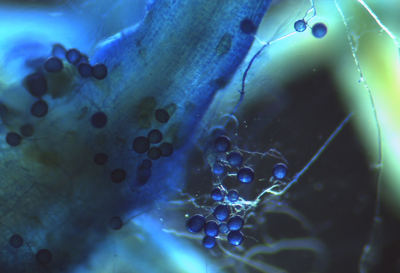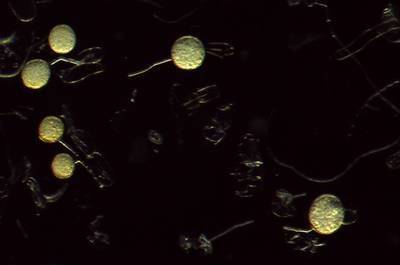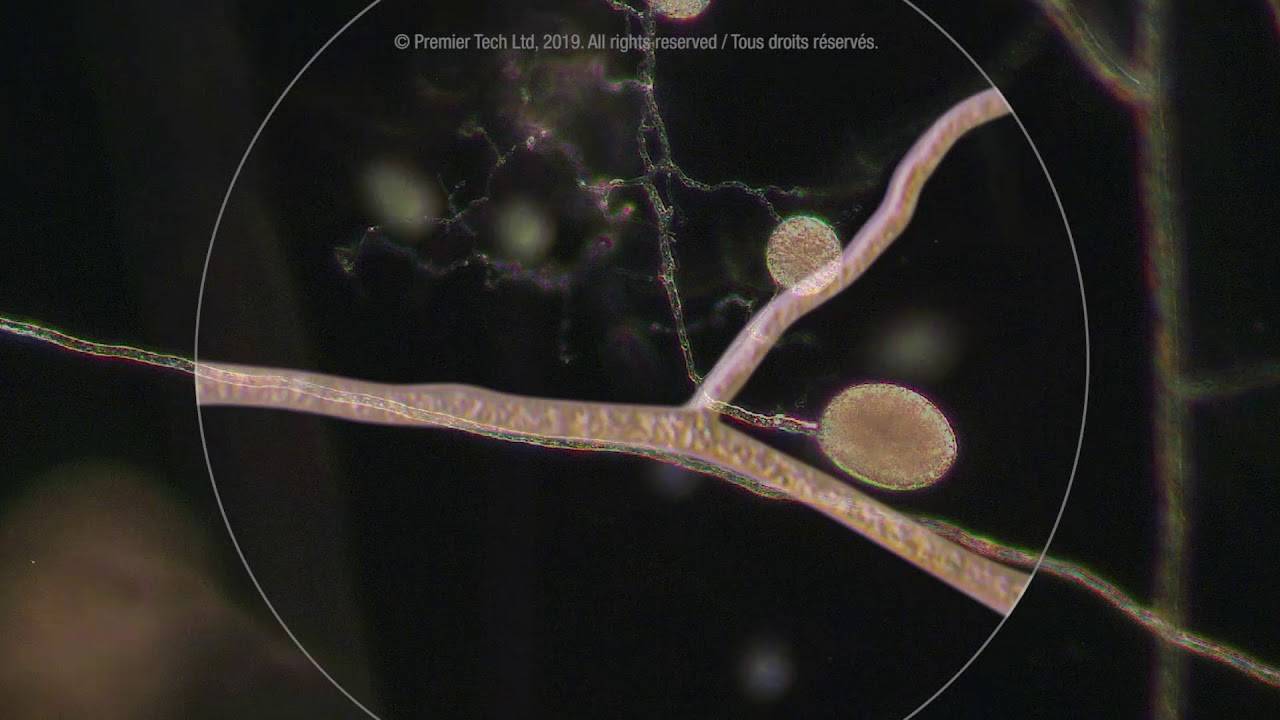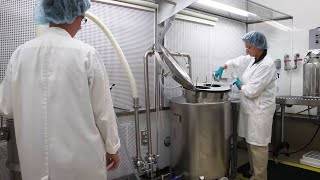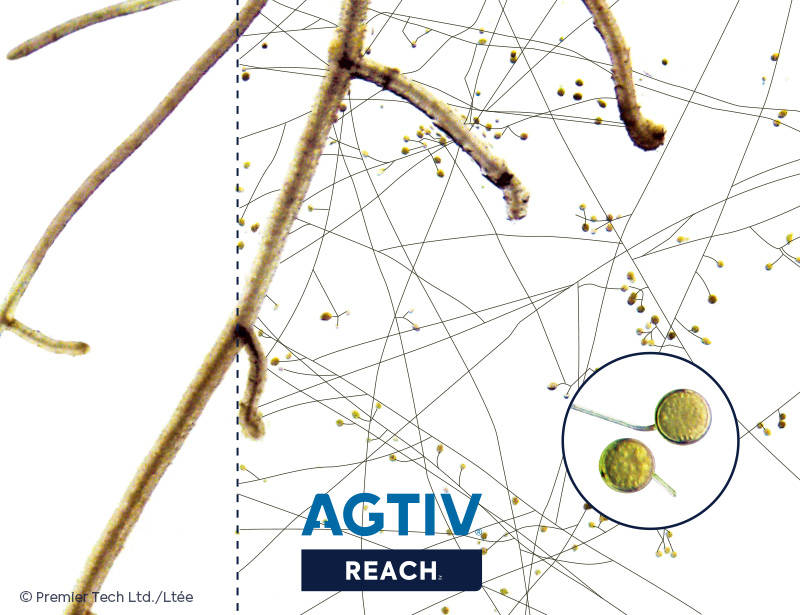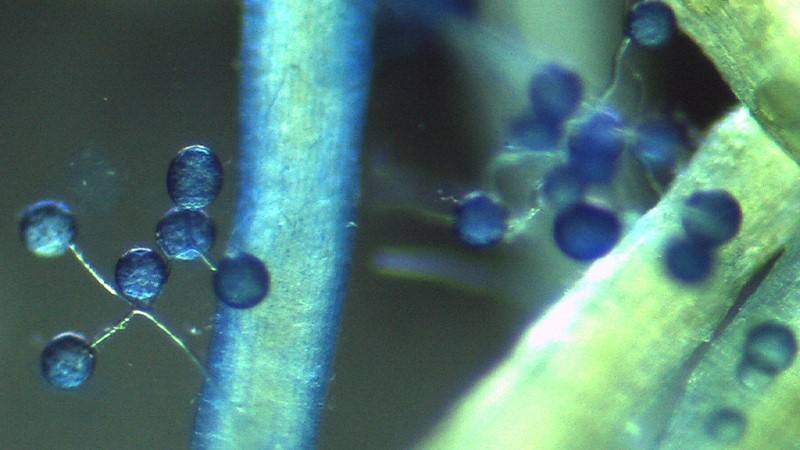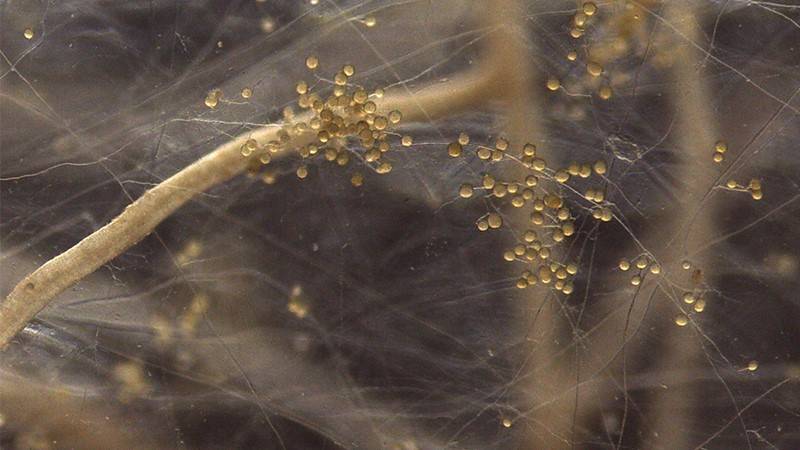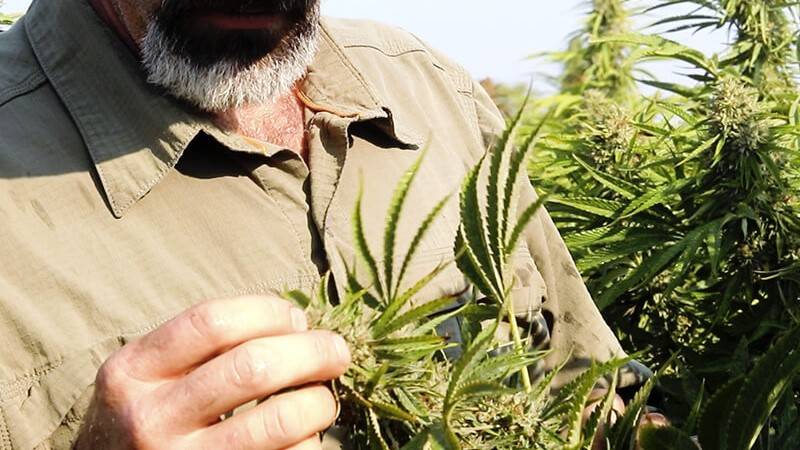
AGTIV REACH® helps plants reach and absorb more nutrients and water thanks to mycorrhizae.
 Mycorrhizae
Mycorrhizae
- Expands root system
- Enhances nutrient and water uptake
- Promotes plant robustness and vigor

How Mycorrhizae Work
Spore germination
This mutually beneficial symbiosis between mycorrhizal fungi and plant roots begins with spore germination.
Root Penetration
The thread-like structures, called hyphae, penetrate the roots, creating an internal network of vesicles and arbuscules for nutrient exchange.
Hyphal Network Expansion
Thanks to the carbon supply produced by enhanced photosynthesis, the hyphae create a network in the soil, increasing the nutrient and water absorption area of the plant up to 100 times.
Increased Nutrient and Water Absorption
This vast network acts as a second root system, enabling the plant to reach nutrients and water previously inaccessible in the soil.
Key Benefits of Mycorrhizae for Crops
Curious to see how AGTIV REACH® can make a difference in your crops? Learn how mycorrhizae deliver healthier plants, enhanced growth, and improved productivity, enabling you to boost overall yield, quality, and uniformity. Experience increased fertilizer and water utilization, enhanced root mass, flower production, and plant size, along with heightened tolerance to abiotic stresses such as drought. Benefit from reduced transplant shock, improving cultivation efforts and maximizing crop productivity.
Crops/Usages
- Annual bedding
- Potted flowering plants
- Potted foliage plants
- Perennials
- Propagation
- Trees and shrubs
Benefits
- Enhances the use of fertilizer and water
- Increases root mass, flower production, plant size
- Increases tolerance to abiotic stresses (drought resistance)
- Reduces transplant shock
- Reduces plant losses

Crops/Usages
- Vegetables
- Herbs and leafy greens
- Microgreens
- Propagation
- Small fruits and Berries
- Transplants
Benefits
- Increases root mass, flower production, plant size and greener leaves
- Enhances the use of fertilizer and water
- Improves plant strength and productivity
- Reduces plant losses
- Increases drought resistance

Crops/Usages
- Dry bean
- Cereal & Flax
- Forages
Specialty Crops
- Fruits & vegetables
- Potato
Benefits
- Quicker plant establishment
- Enhances the use of nutrients and water
- Increases tolerance to abiotic stresses (drought resistance)
- Bigger branches and greener leaves
- Increases marketable yields

Crops/Usages
- Landscaping
- Tree care
- Lawn Care
- Hydroseeding
Benefits
- Decreases plant losses
- Reduces transplant shock
- Ensures faster establishment
- Reduces watering needs and fertilizer use
- Improves soil structure

Benefits
- Increases root mass, flower production and plant size
- Better terpene profile and higher cannabinoid content
- Trichome density (frostier buds)
- Stronger aroma (smell)
- Increases resin level (stickiness)

Comparative picture without vs with mycorrhizae.
Gallery
